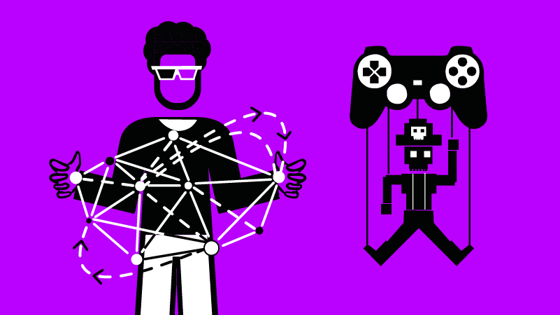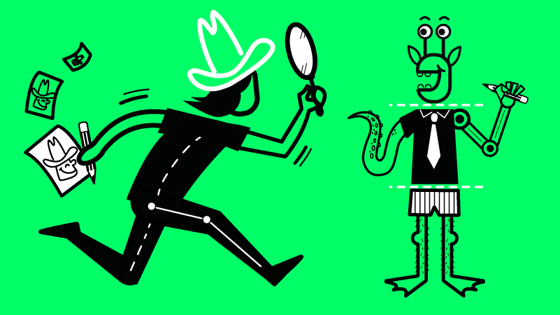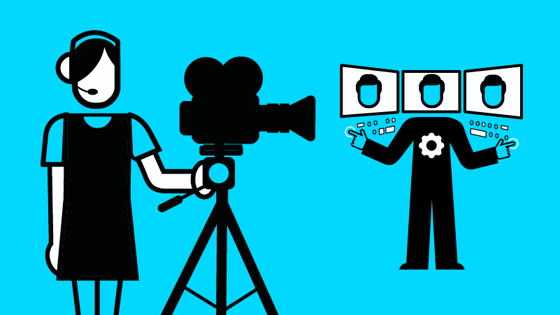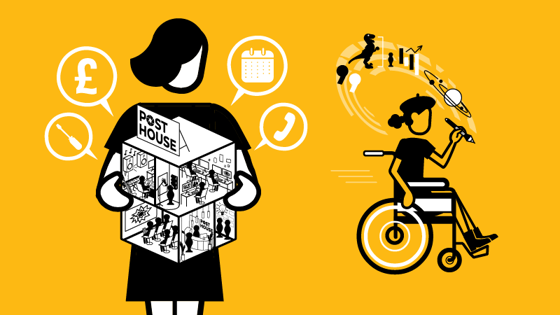Film and TV drama
Supervising sound editor
Also known as: Sound editor, Sound effects editor
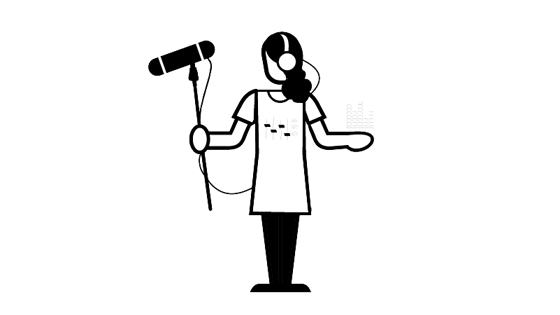
What does a supervising sound editor do?
Supervising sound editors manage the team that looks after each part of the sound of a film or TV drama. This includes those responsible for dialogue, additional dialogue recording (ADR), sound effects, background sounds and Foley. (See Who works with a supervising sound editor below for the full list.)
Their role varies according to the budget of the production. On lower budget films they start work when the picture editor has achieved picture lock – the point at which the director or executive producer has given the final approval for the picture edit. On bigger budget films, they start work before shooting begins and appoint specialist sound editors to supervise separate teams for each area of work.
After picture lock, supervising sound editors attend a “spotting session” with the director and other sound editors. They discuss any concepts for the overall feel of the sound (naturalistic or stylised), check every sound effect and line of dialogue to see what’s needed.
They will then have a hands-on role in creating the overall soundtrack for every discipline.
They are responsible for the sound budget and for organising the workflow – from sound editorial, Foley recording, ADR sessions, pre-mix to final mix - and making plans for any special requirements. After the final mix, supervising sound editors usually oversee the creation of the different deliverables, including a music and effects version which allows dialogue to be replaced with dialogue in different languages.
They usually work in a freelance capacity but are occasionally employed by post-production houses.
The supervising sound editor role is featured on ScreenSkills' new immersive film First Day: In post.
Watch
- How I became a sound designer - interview with Mark Sommerville
- The beautiful lies of sound design - Tasos Fratzolas - TEDxAthens
- How sound editing works
- The magic of making sound
What’s a supervising sound editor good at?
- Listening: have a good ear, know what sounds good, be able to hear sounds that shouldn’t be there
- Story-telling: understand the process of film production, appreciate how sound contributes to the narrative
- Using software: record sound, use editing software, understand how sound is made
- Organisation: budget, recruit staff, plan the work flow, work to deadline
- Communication: understand the vision of the director, work with actors replicating dialogue with ADR, collaborate with the producers, picture editor and sound editors
- Attention to detail: be patient, attend to the smallest sounds, often under pressure in the final mix stage
Who does a supervising sound editor work with?
Supervising sound editors work closely with the director, picture editor and the post-production supervisor, who is responsible for the smooth running of the whole of the post-production process. They also work with the following people in the post-production sound department.
Sound editor
Sound editors work through the film methodically, making notes any lines that need re-recording. Depending on the size of the production, they will pass that over to the ADR mixer or dialogue editor (see below) or they will do that work themselves. Sound editors then sync up the Foley, ADR and sound effects to the picture creating tracks to be used in the pre-dub. Then the tracks are mixed so they have a consistent quality and dynamic range, ready for being heard in cinemas and on TVs. By combining the tracks, it brings them tonally closer together, making it easier for the final mix of three tracks: dialogue, music and effects which accompany the finished film.
Music editor
Music editors intensify the emotional impact of a film by creating the soundtrack. They contribute mood, atmosphere and the occasional catchy theme tune. See separate job profile: music editor.
Sound designer
Sound designers, previously known as sound effects editors (SFX), are concerned with all the sound effects whether that be gunshots, clocks, doors closing, dog barking (spot effects) or rain, wind, traffic, birdsong (atmosphere effects), or special effects such as aliens talking.
Foley editor
Foley editors add subtle sounds that production microphones often miss. These often relate to movement, such as footsteps, fights, fist banging on a door, or pouring wine, shards of glass falling from a broken window. The process gives scenes added realism. They note every Foley effect that is required and work out how to create that sound in special studios. They create the sounds with Foley artists in front of a projected picture and may try several different ways get the right effect. After the studio recording, Foley Editors fit all the Foleys to the images in perfect sync.
Re-recording mixer
Re-recording mixers mix a soundtrack for preview sessions. They work at large mixing consoles smoothing out sound and adding a temporary music soundtrack prepared by the music editor. After previews, when the film or show has been re-cut, re-recording mixers further pre-mix the sound and reduce the number of tracks in preparation for the final mix. In the final mix, the soundtrack is refined in consultation with the director and mixed to industry standards.
ADR mixer or ADR dialogue editor
Dialogue editors review the original sound files of a production to spot technical or performance-related problems and analyse whether they could be replaced by an alternate take. Working on a digital audio workstation (DAW), they use editing software to cut between a number of takes to create crisp clean lines of dialogue. If this isn't possible they will use additional dialogue recording (ADR). This is where actors come in for a voice recording session, watching themselves on screen and re-voicing as accurately as possible. After newly recorded ADR has been edited into the original track, ADR mixers work to make all background or ambient sound smooth.
Audio assistant or dubbing assistant
Audio assistants look after the audio suites, checking they are tidy and ready to be used. They help with voiceover recording and find and order special effects from libraries. They help with selecting and mixing dialogue, music and special effects.
Audio describer
Audio describers are responsible for creating detailed descriptions to be provided in cinemas or as home-viewing addition soundtracks for visually impaired viewers. They use a specially designed programme which simultaneously displays the film script, actual image and timecodes to enable them to write their own narration according to precise timing. Once the audio description script is prepared they will spend several days recording and mixing the new specific soundtrack, which will be reviewed by the distributor. Most sound post-production houses prefer to train their own audio describers and advertise for trainees on their websites or through other press.
How do I become a supervising sound editor?
Most supervising sound editors begin as runners in post-production or audio post-production houses. They work their way up to assistant, mixer or sound editor and spend many years perfecting their craft before becoming a supervising sound editor. Take a look at our job profile of a post-production runner for details of how to start.
At school or college:
If you want to go to university, A-levels or Highers in computer science, music, film studies, maths, further maths, media studies or physics are useful. Or you might want to take the following Level 3 vocational qualifications:
- BTEC National Diploma/Extended Diploma in Computing
- BTEC National Extended Diploma in Creative Digital Media Production
If you want to go straight into a job or apprenticeship, the following Level 3 vocational qualifications will equip you:
- Aim Awards Diploma in Creative and Digital Media
- AQA Technical Level IT: Programming
- OCR Technical Diploma in Digital Media (Digital Content for Interactive Media)
- OCR Technical Diploma in Digital Media (Moving Image and Audio Production)
- OCR Technical Diploma in IT (Digital Software Practitioner)
- BTEC National Diploma/Extended Diploma in Music Technology
- BTEC National Diploma in Computing for Creative Industries
- BTEC National Diploma in Sound Production
- BTEC National Extended Certificate in Sound Engineering
- BTEC National Extended Diploma in Electrical and Electronic Engineering
- RSL Subsidiary Diploma for Music Practitioners (Technology)
- UAL Diploma/Extended Diploma in Creative Media Production and Technology
Get an apprenticeship:
Apprenticeships are jobs with learning, so they’re a great opportunity to earn as you learn. Try to find a job as an apprentice with a post-production facility, but if you can’t, it’s worth learning the skills in another industry and moving into post-production at a later point.
These are the apprenticeships that might be relevant to your interests throughout the UK:
- Post production technical operator (Level 4, England)
- Technical Theatre: Lighting, Sound and Stage (Level 2, 3, Northern Ireland)
- Creative and Digital Media (Level 3, Northern Ireland)
- Sound Recording, Engineering and Studio Facilities (Level 2, 3, Wales)
- Technical Theatre: Lighting, Sound and Stage (Level 2, 3, Wales)
- Creative and Digital Media (Level 3, 4, Wales)
In Scotland, you might be able to find degree-level apprenticeships through the following frameworks:
- Creative (SCQF Level 6/7, Scotland)
- Creative and Digital Media (SCQF Level 6/7, Scotland)
Before taking any apprenticeship, check what you’ll be learning with your prospective employer and college, so you can be sure it will be giving you the skills you want. Go to how to become an apprentice to learn how to find apprenticeships in your region or approach companies directly.
Get a degree:
You could get a degree in music, sound recording ('tonmeister'), electronics, maths or sound technology. Have a look at ScreenSkills’ list of recommended courses in film and TV. Choose one which will teach you about sound editing and which gives you access to post-production facilities. We recognise courses with our ScreenSkills Select award where they offer training in the relevant software, dedicated time to building a portfolio and have strong links with the film and TV industries.
Make films:
Do the sound on student productions. Make a showreel of your work and build your sound portfolio. This is evidence of your practical skills and creativity that you can show admissions tutors and employers.
Network:
Go to ScreenSkills’ events like Open Doors to meet people working in art departments. Show them your portfolio and give them your number.
Network online:
Create a LinkedIn profile. See if there’s a Facebook page or other social media group for people making films or videos in your area. Join it. Create a ScreenSkills profile.
Become a trainee:
Apply to be on ScreenSkills’ Trainee Finder scheme. You could apply to be a post-production trainee or to be a sound trainee in film. Either would give you a valuable way into the industry.
Look for audio post-production companies:
Sign up to Production Base to learn who is making what. Contact them and look out for jobs in sound.
You might also be interested in…
Being a sound designer or an audio programmer in the games industry.
Further information
- Film Sound
- Sonic Arts Network
- Zaxcom
- Institute of Broadcast Sound
- Sound on Sound
- Music Tech Magazine
- Audio Media Magazine
- The Association of Motion Picture Sound (AMPS)
- The Association of Professional Recording Studios (APRS)
- The Audio Engineering Society
- Sound and Music
- Broadcast
- Empire
- Screen Daily
- Box Office Mojo
- BAFTA Guru – YouTube Playlists
- ScreenSkills resources directory


